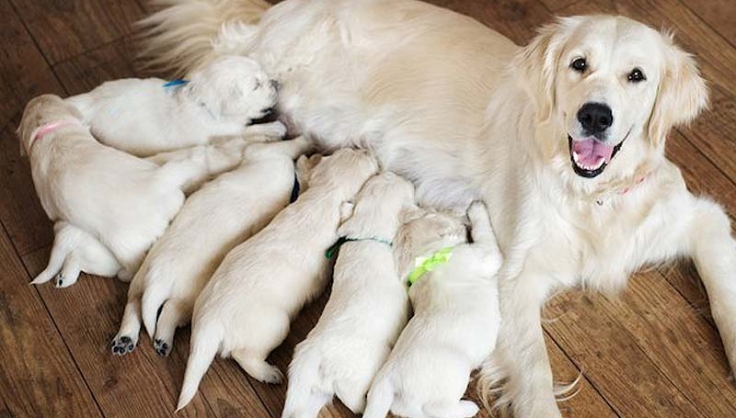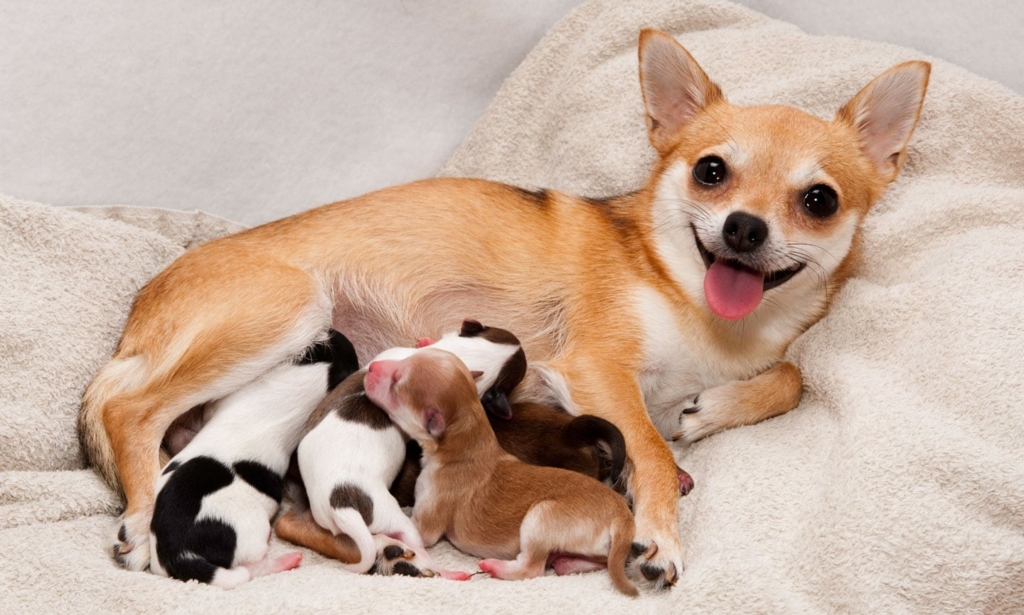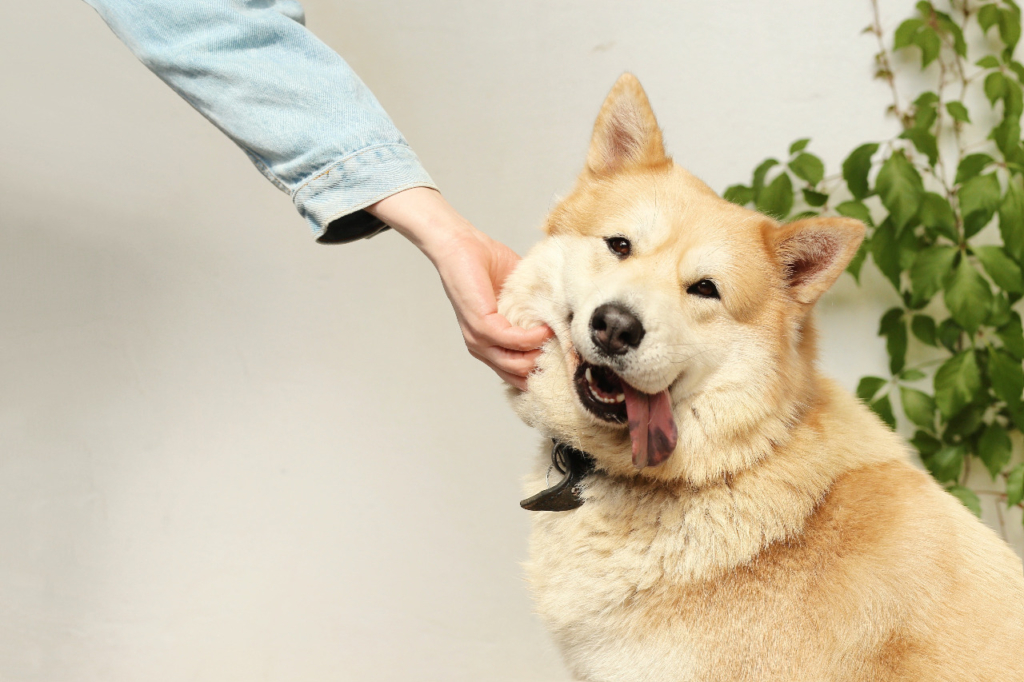
Dogs are a joy to have as a companion during their pregnancy. Unsterilized female dogs go into heat twice a year, or around every 6 months. Each heat cycle lasts approximately 18 days and lasts for a total of approximately 2 to 3 weeks. To learn more about the female dog heat cycle, click here.
It takes around 62-64 days, or approximately two months, for a dog to complete a pregnancy; however, estimating the timing of a delivery can be problematic because the date of breeding does not always coincide with the date of conception.
The length of a pregnancy can also vary depending on the breed and the size of the litter. Pregnancy causes changes in hormones, weight, appetite, and behavior in dogs, just as it does in human pregnant women.
If you suspect that your dog may be pregnant, you may want to start looking for indicators of pregnancy in dogs as soon as possible. Many indications and symptoms do not manifest themselves until the first month has nearly passed, so be prepared to observe shifts in your dog’s mood.
During this period, your pregnant dog will require more affection and attention than usual. Make sure not to force the pregnant dog to participate in intense activities, and visit a veterinarian for information on medications and diet appropriate for pregnant dogs. However, while your veterinarian is the finest source of information on pregnant dogs, the following explanation of the signs of pregnancy in dogs, as well as information on caring for pregnant dogs, may be of assistance.
Symptoms of Canine Pregnancy

Diagnostic testing isn’t the only way to determine whether a dog is pregnant, although it is the most accurate. There are signs of dog pregnancy you can watch for, including:
- Increase in appetite
- Weight gain
- Increase in nipple size
- Swollen belly
- Tires more easily
- Nesting behavior
- More affectionate
- Irritability
Furthermore, due to hormonal fluctuations, some dogs may vomit and lose appetite for a few days in the first several weeks. Some dogs will sigh, however, they could be undergoing a fake pregnancy. Other illnesses can also cause changes in appetite, weight gain, and a bloated abdomen. Take your dog to the veterinarian for a checkup to rule out a more serious condition.
Signs of Labor
You must now keep an eye out for symptoms of labor now that you are prepared. Here are some symptoms that your dog is in labor:
- 48 hours before delivery – nesting
- 24 hours before birth – the temperature drops below 100°F
- 6 to 12 hours before – pace, panting, vomiting, and digging
Preparing for Labor
As your dog’s abdomen swells, she may begin acting more fatigued, thirsty, and irritated. Make sure she has a place to go when she wants to rest separate from stressful family life. Make a large, warm, pleasant, and comfy whelping box for the dog to give birth in. If you can’t find a box, create a safe haven in your home by covering it with blankets, dog pads, and towels. Most dogs will want to stay near to their owners but may prefer short periods to themselves where they won’t be bothered and can begin nesting.
As noted above, prepare a whelping box for the puppies several days or weeks in advance. Keep it in a clean, dry spot, and don’t let other animals or children around it, as the smell may alarm the mother who is about to whelp there.
Shortly before delivery, the pregnant dog may rustle through newspapers or even move pieces of family clothes to her whelping box in her preparations for nesting, or whelping. Protect her secluded place by keeping lights low and family members or visitors away from the area. Avoid doing things that could frighten or disturb a pregnant dog, like having new flooring installed or removing long-time furnishings with which she is comfortable. Unfamiliar scents, sounds, and sights might be unpleasant to the dog that is preparing to whelp.
Keep an emergency kit on hand, which should comprise the following items:
- A digital thermometer
- Disposable absorbent pads
- Exam gloves that are disposable
- Hand towels
- Washcloths
- Rubbing alcohol
- Antiseptic
Don’t forget to have your veterinarian’s contact information in case of complications during the labor process.
Signs of complications
If you see any of the following symptoms, contact your veterinarian right away:
- Her fever has been dropping for 24 hours and she has not gone into labor.
- She has been having contractions or straining for more than 45 minutes and no puppy has emerged.
- A puppy has been stuck in the delivery canal, or the mother is too exhausted to push anymore.
- It’s been more than four hours since the last pup was born, and there are still more puppies to be born.
- She appears to be in a lot of discomfort.
- Her gestation period has now lasted 65 days.
- You have further fears or doubts while she is giving delivery.
Call your veterinarian as soon as the puppies are born. They will provide additional instructions. Avoid handling the puppies right away. To avoid causing stress to the mother and her babies, contact a veterinarian at home.
After-Birth Care
Even if everything went perfectly during the birth, you will have a lot of work to do over the next two months! After the childbirth process is completed, clean the mother as thoroughly as possible without distressing her by using warm water and a washcloth. Unless otherwise directed by your veterinarian, refrain from using any soaps or disinfectants. Remove any dirty newspaper or bedding from the whelping box and dispose of it properly.
Most of the time, the new mother will be with the puppies, and this is customary. It may be tough to convince her to leave the nest, even to go to the bathroom, during the first few days of her new life. It is critical, however, that she continues to urinate and defecate in a customary manner. If she refuses to leave the house on her own, do not be afraid to put her on a collar and leash and take her for a brief walk. Even though she will just want to be out for a few minutes, you will be able to clean up the bed and prepare the whelping box for the puppies during that time. It is vital to ensure that your dog does not contract ticks or fleas, for the safety of both your dog and the newborn litter of puppies. If you want to learn more about tick fever, check it out here.

The Takeaway
- Dogs may be pregnant for 63-65 days.
- Whelping is best done in a quiet, secluded environment like a large closet or bedroom.
- Pregnancy symptoms may include a swollen belly, changes in weight and appetite, and swollen nipples.
- Labor complications must be overlooked by a veterinarian by phone or home visits for further guidance and instructions.
- Make certain that the puppies remain warm. For the first week or two after birth, young puppies are unable to regulate their own body temperature.


